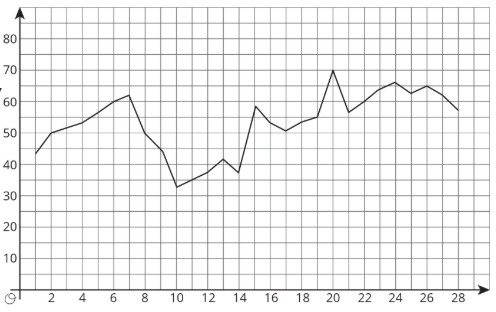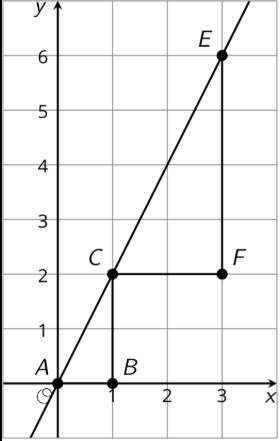7.3.6: Multiplying, Dividing, and Estimating with Scientific Notation
- Page ID
- 36791
\( \newcommand{\vecs}[1]{\overset { \scriptstyle \rightharpoonup} {\mathbf{#1}} } \)
\( \newcommand{\vecd}[1]{\overset{-\!-\!\rightharpoonup}{\vphantom{a}\smash {#1}}} \)
\( \newcommand{\id}{\mathrm{id}}\) \( \newcommand{\Span}{\mathrm{span}}\)
( \newcommand{\kernel}{\mathrm{null}\,}\) \( \newcommand{\range}{\mathrm{range}\,}\)
\( \newcommand{\RealPart}{\mathrm{Re}}\) \( \newcommand{\ImaginaryPart}{\mathrm{Im}}\)
\( \newcommand{\Argument}{\mathrm{Arg}}\) \( \newcommand{\norm}[1]{\| #1 \|}\)
\( \newcommand{\inner}[2]{\langle #1, #2 \rangle}\)
\( \newcommand{\Span}{\mathrm{span}}\)
\( \newcommand{\id}{\mathrm{id}}\)
\( \newcommand{\Span}{\mathrm{span}}\)
\( \newcommand{\kernel}{\mathrm{null}\,}\)
\( \newcommand{\range}{\mathrm{range}\,}\)
\( \newcommand{\RealPart}{\mathrm{Re}}\)
\( \newcommand{\ImaginaryPart}{\mathrm{Im}}\)
\( \newcommand{\Argument}{\mathrm{Arg}}\)
\( \newcommand{\norm}[1]{\| #1 \|}\)
\( \newcommand{\inner}[2]{\langle #1, #2 \rangle}\)
\( \newcommand{\Span}{\mathrm{span}}\) \( \newcommand{\AA}{\unicode[.8,0]{x212B}}\)
\( \newcommand{\vectorA}[1]{\vec{#1}} % arrow\)
\( \newcommand{\vectorAt}[1]{\vec{\text{#1}}} % arrow\)
\( \newcommand{\vectorB}[1]{\overset { \scriptstyle \rightharpoonup} {\mathbf{#1}} } \)
\( \newcommand{\vectorC}[1]{\textbf{#1}} \)
\( \newcommand{\vectorD}[1]{\overrightarrow{#1}} \)
\( \newcommand{\vectorDt}[1]{\overrightarrow{\text{#1}}} \)
\( \newcommand{\vectE}[1]{\overset{-\!-\!\rightharpoonup}{\vphantom{a}\smash{\mathbf {#1}}}} \)
\( \newcommand{\vecs}[1]{\overset { \scriptstyle \rightharpoonup} {\mathbf{#1}} } \)
\( \newcommand{\vecd}[1]{\overset{-\!-\!\rightharpoonup}{\vphantom{a}\smash {#1}}} \)
Lesson
Let's multiply and divide with scientific notation to answer questions about animals, careers, and planets.
Exercise \(\PageIndex{1}\): True or False: Equations
Is each equation true or false? Explain your reasoning.
- \(4\times 10^{5}\times 4\times 10^{4}=4\times 10^{20}\)
- \(\frac{7\times 10^{6}}{2\times 10^{4}}=(7\div 2)\times 10^{(6-4)}\)
- \(8.4\times 10^{3}\times 2=(8.4\times 2)\times 10^{(3\times 2)}\)
Exercise \(\PageIndex{2}\): Biomass
Use the table to answer questions about different creatures on the planet. Be prepared to explain your reasoning.
| creature | number | mass of one individual (kg) |
|---|---|---|
| humans | \(7.5\times 10^{9}\) | \(6.2\times 10^{1}\) |
| cows | \(1.3\times 10^{9}\) | \(4\times 10^{2}\) |
| sheep | \(1.75\times 10^{9}\) | \(6\times 10^{1}\) |
| chickens | \(2.4\times 10^{10}\) | \(2\times 10^{0}\) |
| ants | \(5\times 10^{16}\) | \(3\times 10^{-6}\) |
| blue whales | \(4.7\times 10^{3}\) | \(1.9\times 10^{5}\) |
| Antarctic krill | \(7.8\times 10^{14}\) | \(4.86\times 10^{-4}\) |
| zooplankton | \(1\times 10^{20}\) | \(5\times 10^{-8}\) |
| bacteria | \(5\times 10^{30}\) | \(1\times 10^{-12}\) |
- Which creature is least numerous? Estimate how many times more ants there are.
- Which creature is the least massive? Estimate how many times more massive a human is.
- Which is more massive, the total mass of all the humans or the total mass of all the ants? About how many times more massive is it?
- Which is more massive, the total mass of all the krill or the total mass of all the blue whales? About how many times more massive is it?
Exercise \(\PageIndex{3}\): Info Gap: Distances in the Solar System
Your teacher will give you either a problem card or a data card. Do not show or read your card to your partner.
If your teacher gives you the problem card:
- Silently read your card and think about what information you need to answer the question.
- Ask your partner for the specific information that you need.
- Explain to your partner how you are using the information to solve the problem.
- Solve the problem and explain your reasoning to your partner.
If your teacher gives you the data card:
- Silently read the information on your card.
- Ask your partner “What specific information do you need?” and wait for your partner to ask for information. Only give information that is on your card. (Do not figure out anything for your partner!)
- Before telling your partner the information, ask “Why do you need that information?”
- After your partner solves the problem, ask them to explain their reasoning and listen to their explanation.
Pause here so your teacher can review your work. Ask your teacher for a new set of cards and repeat the activity, trading roles with your partner.
Are you ready for more?
Choose two celestial objects and create a scale drawing of them in the applet below.
| object | distance to earth (km) | diameter (km) | mass (kg) |
| Sun | \(1.496\times 10^{8}\) | \(1.392\times 10^{6}\) | \(1.989\times 10^{30}\) |
| Mercury | \(7.73\times 10^{7}\) | \(4.878\times 10^{3}\) | \(3.3\times 10^{23}\) |
| Venus | \(4\times 10^{7}\) | \(1.21\times 10^{4}\) | \(4.87\times 10^{24}\) |
| Earth | N/A | \(1.28\times 10^{4}\) | \(5.98\times 10^{24}\) |
| Mars | \(5.46\times 10^{7}\) | \(6.785\times 10^{3}\) | \(6.4\times 10^{23}\) |
| Jupiter | \(5.88\times 10^{8}\) | \(1.428\times 10^{5}\) | \(1.898\times 10^{27}\) |
| Saturn | \(1.2\times 10^{9}\) | \(1.199\times 10^{5}\) | \(5.685\times 10^{26}\) |
| Uranus | \(2.57\times 10^{9}\) | \(5.149\times 10^{4}\) | \(8.68\times 10^{25}\) |
| Neptune | \(4.3\times 10^{9}\) | \(4.949\times 10^{4}\) | \(1.024\times 10^{26}\) |


Plot a point for the center of each circle. Select the Circle with Center and Radius tool and click on a point. When the dialog box opens, enter the radius.
GeoGebra Applet esEdKmyB
Exercise \(\PageIndex{4}\): Professions in the United States
Use the table to answer questions about professions in the United States as of 2012.
| profession | number | typical annual salary (U.S. dollars) |
|---|---|---|
| architect | \(1.074\times 10^{5}\) | \(7.3\times 10^{4}\) |
| artist | \(5.14\times 10^{4}\) | \(4.4\times 10^{4}\) |
| programmer | \(1.36\times 10^{6}\) | \(8.85\times 10^{4}\) |
| doctor | \(6.9\times 10^{5}\) | \(1.87\times 10^{5}\) |
| engineer | \(6.17\times 10^{5}\) | \(8.6\times 10^{4}\) |
| firefighter | \(3.07\times 10^{5}\) | \(4.5\times 10^{4}\) |
| military-enlisted | \(1.16\times 10^{6}\) | \(4.38\times 10^{4}\) |
| military-officer | \(2.5\times 10^{5}\) | \(1\times 10^{5}\) |
| nurse | \(3.45\times 10^{6}\) | \(6.03\times 10^{4}\) |
| police officer | \(7.8\times 10^{5}\) | \(5.7\times 10^{4}\) |
| college professor | \(1.27\times 10^{6}\) | \(6.9\times 10^{4}\) |
| retail sales | \(4.67\times 10^{6}\) | \(2.14\times 10^{4}\) |
| truck driver | \(1.7\times 10^{6}\) | \(3.82\times 10^{4}\) |
Answer the following questions about professions in the United States. Express each answer in scientific notation.
- Estimate how many times more nurses there are than doctors.
- Estimate how much money all doctors make put together.
- Estimate how much money all police officers make put together.
- Who makes more money, all enlisted military put together or all military officers put together? Estimate how many times more.
Summary
Multiplying numbers in scientific notation extends what we do when we multiply regular decimal numbers. For example, one way to find \((80)(60)\) is to view 80 as 8 tens and to view 60 as 6 tens. The product \((80)(60)\) is 48 hundreds or 4,800. Using scientific notation, we can write this calculation as \((8\times 10^{1})(6\times 10^{1})=48\times 10^{2}\). To express the product in scientific notation, we would rewrite it as \(4.8\times 10^{3}\).
Calculating using scientific notation is especially useful when dealing with very large or very small numbers. For example, there are about 39 million or \(3.9\times 10^{7}\) residents in California. Each Californian uses about 180 gallons of water a day. To find how many gallons of water Californians use in a day, we can find the product \((180)(3.9\times 10^{7})=702\times 10^{7}\), which is equal to \(7.02\times 10^{9}\). That’s about 7 billion gallons of water each day!
Comparing very large or very small numbers by estimation also becomes easier with scientific notation. For example, how many ants are there for every human? There are \(5\times 10^{16}\) ants and \(7\times 10^{9}\) humans. To find the number of ants per human, look at \(\frac{5\times 10^{16}}{7\times 10^{9}}\). Rewriting the numerator to have the number 50 instead of 5, we get \(\frac{50\times 10^{15}}{7\times 10^{9}}\). This gives us \(\frac{50}{7}\times 10^{7}\). Since \(\frac{50}{7}\) is roughly equal to 7, there are about \(7\times 10^{6}\) or 7 million ants per person!
Glossary Entries
Definition: Scientific Notation
Scientific notation is a way to write very large or very small numbers. We write these numbers by multiplying a number between 1 and 10 by a power of 10.
For example, the number 425,000,000 in scientific notation is \(4.25\times 10^{8}\). The number 0.0000000000783 in scientific notation is \(7.83\times 10^{-11}\).
Practice
Exercise \(\PageIndex{5}\)
Evaluate each expression. Use scientific notation to express your answer.
- \((1.5\times 10^{2})(5\times 10^{10})\)
- \(\frac{4.8\times 10^{-8}}{3\times 10^{-3}}\)
- \((5\times 10^{8})(4\times 10^{3})\)
- \((7.2\times 10^{3})\div (1.2\times 10^{5})\)
Exercise \(\PageIndex{6}\)
How many bucketloads would it take to bucket out the world’s oceans? Write your answer in scientific notation.
Some useful information:
- The world’s oceans hold roughly \(1.4\times 10^{9}\) cubic kilometers of water.
- A typical bucket holds roughly 20,000 cubic centimeters of water.
- There are \(10^{15}\) cubic centimeters in a cubic kilometer.
Exercise \(\PageIndex{7}\)
The graph represents the closing price per share of stock for a company each day for 28 days.
- What variable is represented on the horizontal axis?
- In the first week, was the stock price generally increasing or decreasing?
- During which period did the closing price of the stock decrease for at least 3 days in a row?

(From Unit 5.2.3)
Exercise \(\PageIndex{8}\)
Write an equation for the line that passes through \((-8.5,11)\) and \((5,-2.5)\).
(From Unit 3.3.3)
Exercise \(\PageIndex{9}\)
Explain why triangle \(ABC\) is similar to triangle \(CFE\).

(From Unit 2.2.1)


